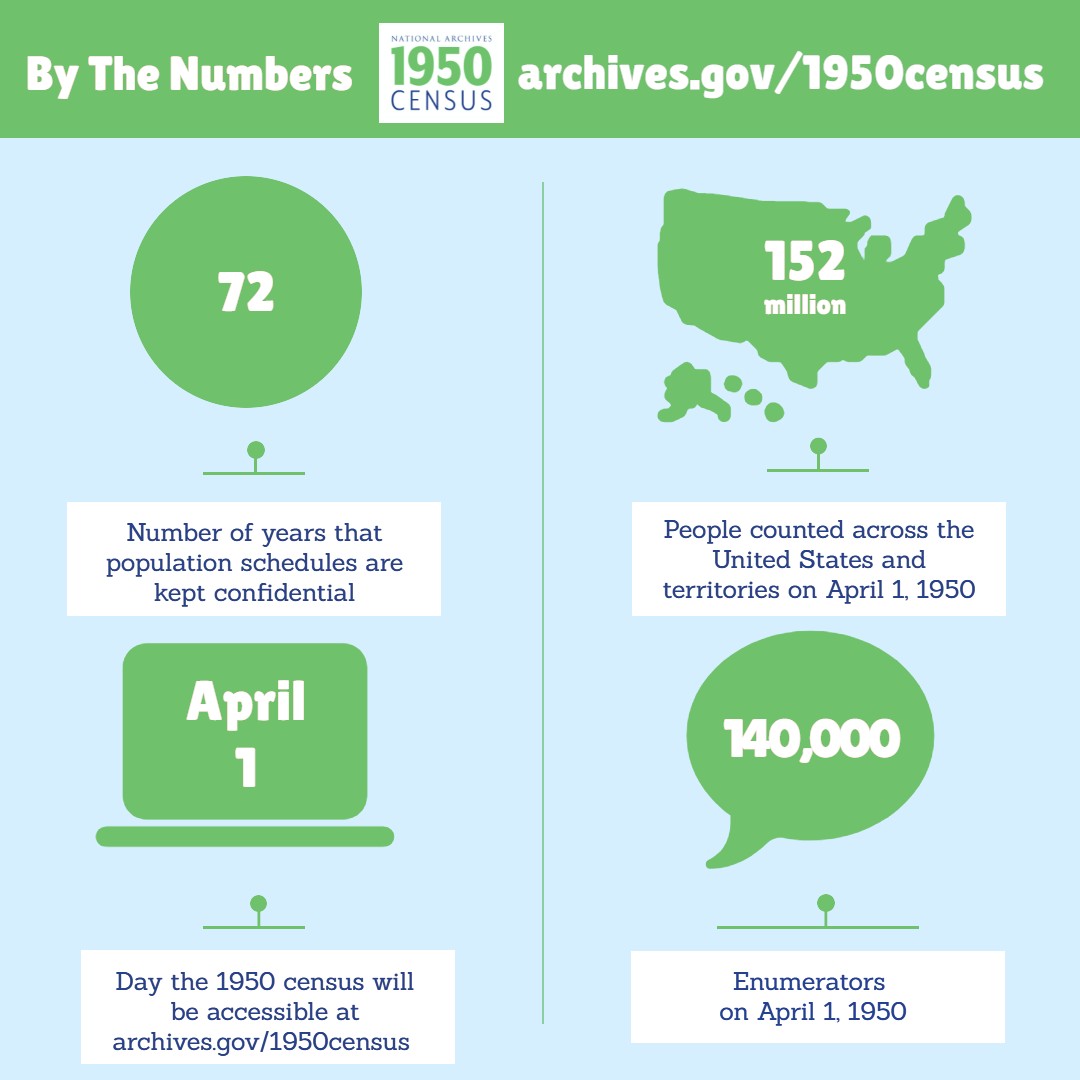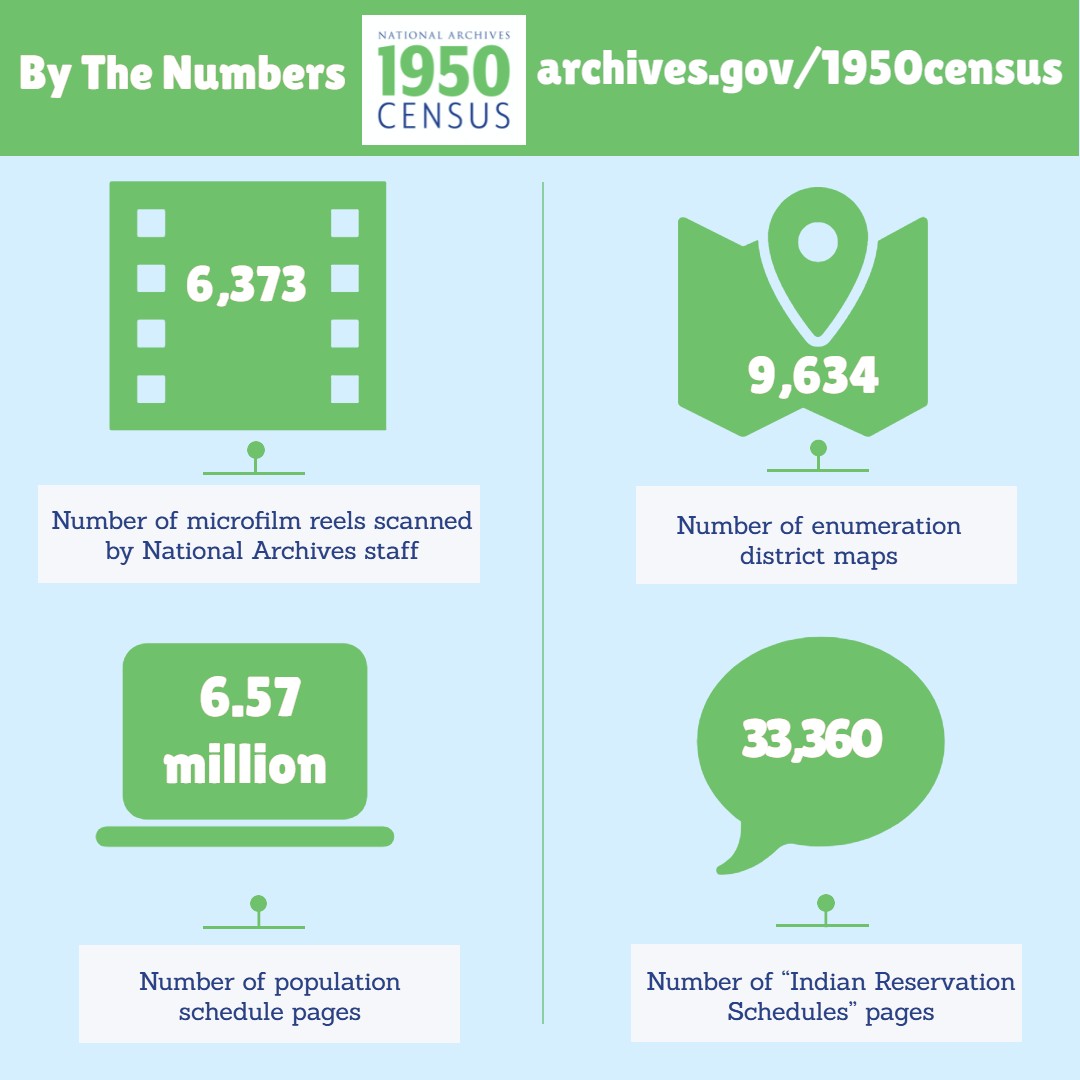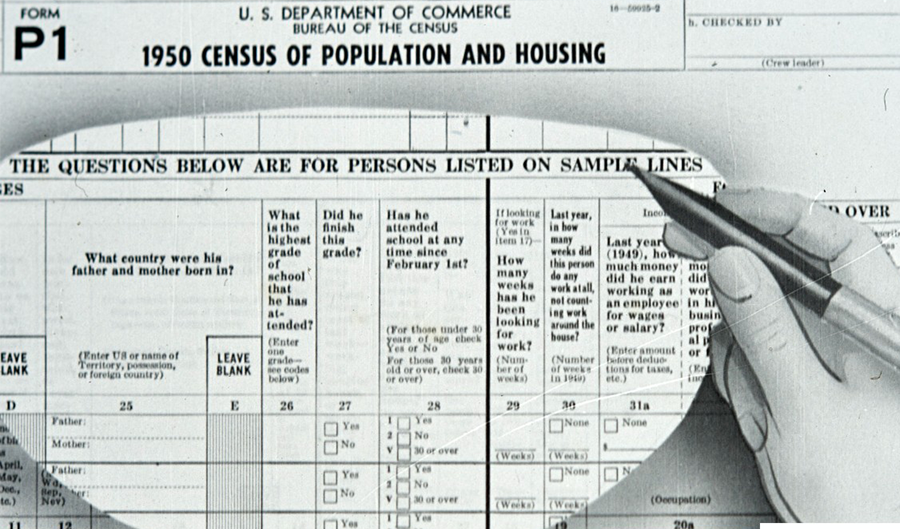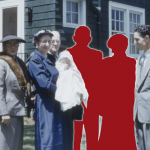The National Archives and Records Administration released the population records of the 1950 Census today. The digital images will be accessible online free of charge.
Anyone, anywhere can now freely access these records online as well as contribute updates to the draft name index, which will be forever associated with the archival record of these documents.
“I am grateful to the staff of the National Archives for their dedication in preserving and providing access to this important set of records,”
said Archivist of the United States David S. Ferriero.
“Because of their years of efforts, you can now research the 1950 Census. I personally can’t wait to look up my own family in Beverly, Massachusetts. This is the first census in which I am recorded. The census is full of family stories, and we know you are eager to look for yours. We hope you have a wonderful time researching in the 1950 Census records.”
Robert Santos, Director of the U.S. Census Bureau, expressed his own excitement and personal interest in this records release.
“While the Decennial Census is constitutionally used to determine congressional apportionment to states, the completed forms can give us a unique peek into our nation’s past to the delight of historians, genealogists and to all of us—the public. So thanks to all those people who participated in the 1950 Census, we can follow the movement of people across the country and gain a glimpse into how they lived through the National Archives release,” remarked Santos. “As for me, I’m looking to see the form submitted at the house where my abuelita, my grandmother, lived on Parsons Street in San Antonio with my parents, my aunts, and my uncles. I’d love to compare the 1940 and the 1950 Census forms for that address to see how the family finally dispersed.”
The 1950 population census is the 17th decennial census of the United States. For the online release of the 1950 census, the National Archives digitized more than 6.4 million pages of census schedules for U.S. states and territories, enumeration district maps, and enumeration district descriptions. By law, the information on individuals in the decennial censuses, which are mandated by the U.S. Constitution, is restricted from public release for 72 years.
The National Archives maintains and provides access to the permanently valuable records of our government, including census records. Outlined as mandated by Article 1, Section 2 of the Constitution, and taken every 10 years since 1790, the census helps define “We the People” by providing a snapshot of the nation’s population. It is a once-a-decade population and housing count of everyone living in the United States. These records provide genealogists, historians, researchers, demographers, sociologists, political scientists, and the public an opportunity to research family and community histories alongside our nation’s history. While the original intent of the census was to determine how many representatives each state was entitled to send to the U.S. Congress, it has become a vital tool for federal agencies in determining allocation of federal funds and resources.
Access to the digitized records, along with many helpful contextual documents, frequently asked questions, articles, blog posts, and a video celebration featuring notable guest speakers, can be found on the National Archives 1950 Census page.
Table of Contents
Five Tips for Searching The 1950 US Census
- Search for the first and last name of the head of household (plus state and county of residence if known) because the surname was written on the census form only on the line for the head of household and other persons in the household with a different surname.
- To narrow your search to find specific records, you can select multiple filters. Or to conduct a broader search, you may choose to select one filter at a time.
- You don’t have to know the exact spelling of a person’s name in order to perform a name search. Enter as much as you know. The search engine will return any close variations or matches.
- Once you’ve found a record of interest, click on the buttons or links labeled “Population Schedules”, “ED Maps”, or “View Original ED Description” to view a digitized copy of the records.
- Use the built-in transcription feature to correct and add names to the site’s name index. Your contributions can help make the 1950 Census population schedules more discoverable for everyone.
1950 Census: Overview of Website Features
A brief demonstration of the website features for the 1950 Census release, presented by Michael L. Knight, Web Branch Chief for the Office of Innovation (Digital Engagement Division) at the National Archives and Records Administration.
Additional videos covering the genealogical aspects of the 1950 Census can be viewed in this playlist: https://www.youtube.com/playlist?list… For more information and access to the 1950 Census: https://www.archives.gov/1950Census







